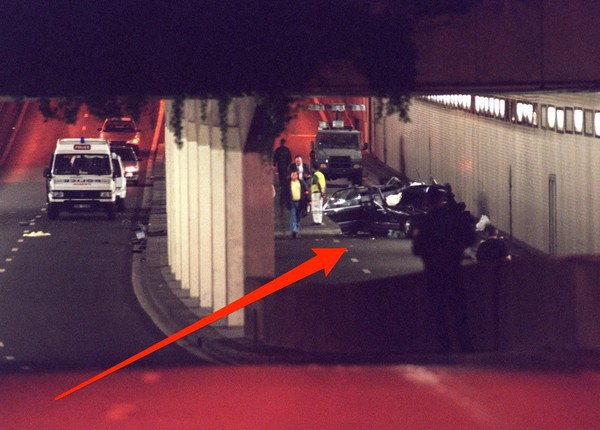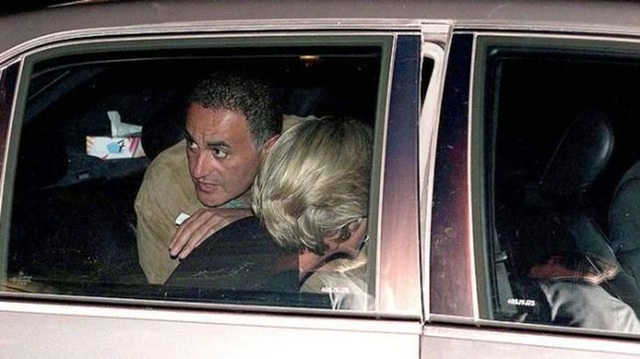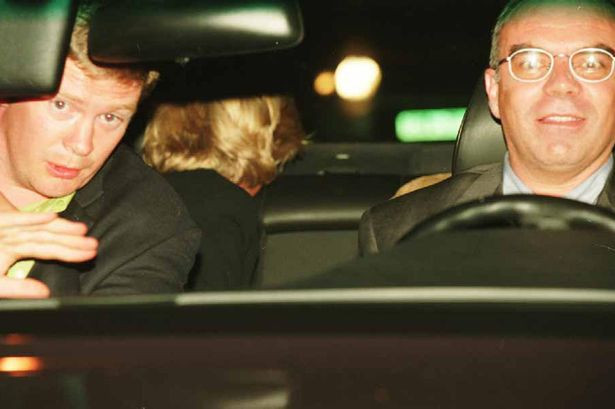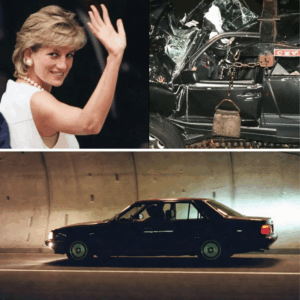On August 31, 1997, the world was shaken by the tragic death of Princess Diana, the “People’s Princess,” in a car crash in Paris’s Pont de l’Alma tunnel. Her untimely demise, alongside her companion Dodi Fayed and driver Henri Paul, sparked a global outpouring of grief and an avalanche of speculation. Was her death a tragic accident, as official investigations concluded, or was it a meticulously orchestrated murder, as conspiracy theorists have long claimed? More than 25 years later, with extensive investigations, forensic evidence, and new revelations, the mystery surrounding Diana’s death remains a topic of intense debate. This article delves into the facts, unravels the mysteries, and examines the evidence to shed light on one of the most enduring enigmas of modern history.
The Fatal Night: What Happened?
The events of that fateful night are well-documented but riddled with questions. Diana and Dodi Fayed, pursued by paparazzi, left the Ritz Hotel in Paris shortly after midnight. Their driver, Henri Paul, took the wheel of a Mercedes S280, with bodyguard Trevor Rees-Jones in the front passenger seat. The car sped through the streets of Paris, attempting to evade the relentless photographers. At approximately 12:23 a.m., the Mercedes entered the Alma tunnel, traveling at an estimated speed of over 60 mph. It collided with a concrete pillar, killing Paul and Fayed instantly. Diana, critically injured, was rushed to Pitié-Salpêtrière Hospital, where she succumbed to her injuries at 4:00 a.m. Rees-Jones, the sole survivor, suffered severe injuries but lived to tell his fragmented tale.

Official reports, including the 1999 French investigation and the 2006 British Operation Paget inquiry, concluded that the crash was an accident caused by Henri Paul’s intoxication and excessive speed, compounded by the paparazzi’s pursuit and the passengers’ failure to wear seatbelts. Yet, the simplicity of this explanation has never fully satisfied a public captivated by Diana’s charisma and skeptical of institutional narratives. The lack of definitive answers to key questions has fueled speculation that her death was no accident.
The Conspiracy Theories: A Murder Plot?
Conspiracy theories emerged almost immediately, driven by Diana’s global prominence, her turbulent relationship with the British royal family, and her own expressed fears of being targeted. One of the most persistent claims, championed by Dodi’s father, Mohamed Al Fayed, is that Diana and Dodi were murdered by British intelligence services, possibly MI6, on orders from the royal family. The alleged motive? To prevent Diana, a beloved figure, from marrying Dodi, a Muslim Egyptian, and potentially bearing his child, which would have been unacceptable to the establishment.

Another theory suggests that Diana’s outspoken criticism of the monarchy and her humanitarian work, particularly her campaign against landmines, made her a threat to powerful interests. In a 1995 note to her butler, Paul Burrell, Diana wrote that her life was in a “dangerous phase” and that her former husband, Prince Charles, was planning “an accident” in her car to clear the path for his remarriage. This chilling premonition, coupled with a similar warning she shared with her solicitor in 1995, lent credence to claims that her death was orchestrated.
Other theories point to a mysterious white Fiat Uno allegedly seen in the tunnel, which some believe collided with the Mercedes, causing it to swerve. Witnesses reported a bright flash in the tunnel, suggesting a deliberate attempt to disorient the driver. Additionally, questions about the handling of Diana’s medical treatment—why it took over an hour to get her to a hospital just a few miles away—have fueled suspicions of a cover-up.
The Evidence: Accident or Foul Play?
To determine whether Diana’s death was an accident or murder, we must examine the evidence systematically, drawing on forensic findings, witness testimonies, and investigative reports.
Henri Paul’s Condition
Central to the official narrative is the claim that Henri Paul, the driver, was intoxicated. Toxicology reports indicated that Paul had a blood alcohol level three times the French legal limit, along with traces of antidepressants. This, combined with the car’s high speed, was deemed the primary cause of the crash. However, Paul’s close friend, Claude Garrec, insisted that Paul was a responsible individual who would not have driven under the influence, especially with such high-profile passengers. Some have questioned the integrity of the blood samples, noting that Paul’s parents sought DNA testing to verify their authenticity, suspecting tampering. Despite these concerns, multiple tests corroborated the initial findings, and Operation Paget found no evidence to suggest the samples were manipulated.

The Role of the Paparazzi
The paparazzi’s aggressive pursuit of Diana’s car has been widely criticized. Photographers on motorcycles chased the Mercedes, hoping to capture lucrative images of the princess and her lover. The 2008 British inquest concluded that the paparazzi’s “grossly negligent” behavior contributed to the crash, as their presence pressured Paul to drive at dangerous speeds. However, the French investigation in 1999 cleared the photographers of manslaughter, noting they were not close enough to the Mercedes at the moment of impact to directly cause the crash. Critics argue that the paparazzi’s actions created a chaotic environment, but there is no evidence they intentionally caused the collision.
The White Fiat Uno and the Bright Flash
One of the most intriguing mysteries is the reported involvement of a white Fiat Uno. Forensic evidence, including red glass fragments and paint traces on the Mercedes, suggested a minor collision with another vehicle before the crash. Witnesses claimed to have seen a Fiat Uno speeding out of the tunnel, but despite an extensive search of over 5,000 such vehicles in Paris, the car and its driver were never identified. This has led to speculation that the Fiat was used to destabilize the Mercedes deliberately.
The theory of a bright flash in the tunnel, possibly a strobe light used to blind Paul, gained traction after former MI6 agent Richard Tomlinson claimed he had seen plans for a similar assassination tactic targeting a foreign leader. However, Tomlinson later retracted parts of his statement, and Operation Paget dismissed his claims as unreliable, noting that no credible evidence supported the flash theory. Witnesses’ conflicting accounts of the flash further weakened this hypothesis.
Diana’s Medical Treatment
The delay in transporting Diana to the hospital has been a focal point for conspiracy theorists. French emergency protocols prioritize stabilizing patients at the scene, which may explain why it took over an hour to reach the hospital. Dr. Frederic Mailliez, a passerby who assisted at the scene, reported that Diana was alive but unconscious. Despite efforts to save her, her internal injuries, including a torn pulmonary vein, were catastrophic. Medical experts consulted during Operation Paget concluded that even immediate transport to the hospital would not have saved her. Allegations that her treatment was deliberately mishandled to ensure her death lack substantiation, as multiple independent medical professionals were involved in her care.
The Pregnancy and Engagement Claims
Mohamed Al Fayed’s assertion that Diana was pregnant with Dodi’s child and that the couple was set to announce their engagement was a cornerstone of his murder theory. However, autopsies conducted by British and French pathologists found no evidence of pregnancy. Close friends, including Rosa Monckton, confirmed that Diana was menstruating shortly before her death and was using contraception. The engagement claim was also debunked, as no evidence suggested Diana intended to marry Dodi, whom she had been dating for only a month. Her confidantes described the relationship as a “summer fling,” and Diana herself had expressed reluctance about remarriage.

The Investigations: Clearing the Fog
The French investigation, concluded in 1999, and the British Operation Paget inquiry, spanning 2004 to 2006, were exhaustive in their scope. Operation Paget, costing £12.5 million, examined 175 conspiracy claims, including allegations of MI6 involvement, SAS interference, and a royal cover-up. The 871-page report categorically stated that there was “no conspiracy to murder” and that the crash was a “tragic accident.” The 2008 British inquest echoed this, attributing the deaths to Henri Paul’s negligence and the paparazzi’s actions, with additional factors like the lack of seatbelts and the car’s collision with the pillar.
Despite these findings, skeptics point to unresolved issues, such as the missing Fiat Uno and the initial suppression of Diana’s 1995 note predicting her death. Legal expert Michael Mansfield, who represented Mohamed Al Fayed, argued in 2022 that the crash was not a “simple road accident” and that questions about unidentified vehicles in the tunnel persist. Public sentiment, reflected in a 2013 YouGov poll showing 38% of Britons believed the crash was not an accident, underscores the enduring distrust in official accounts.
The Verdict: Accident or Something More?
After 25 years, the weight of evidence supports the conclusion that Diana’s death was a tragic accident. Henri Paul’s intoxication, the high speed of the Mercedes, and the paparazzi’s pursuit created a perfect storm of circumstances that led to the crash. The absence of concrete evidence for a conspiracy—despite extensive investigations—undermines claims of foul play. The Fiat Uno and the bright flash remain mysteries, but their significance is likely overstated, as no definitive proof links them to a deliberate act.
However, the persistence of conspiracy theories is not without reason. Diana’s own fears, her strained relationship with the royal family, and the establishment’s discomfort with her influence provide fertile ground for suspicion. The failure to fully explain every detail, such as the unidentified vehicles, keeps the door ajar for speculation. While the truth, as revealed by rigorous investigations, points to an accident, the emotional weight of Diana’s loss and her status as a global icon ensure that questions will linger.
In the end, Princess Diana’s death was a tragedy that exposed the dangers of fame, the pressures of media scrutiny, and the fragility of human life. Whether accident or murder, her legacy endures, not in the mysteries of her death, but in the compassion and courage she embodied. The truth, as close as we may ever come to it, lies in the evidence: a heartbreaking accident that stole a beloved figure from the world.





